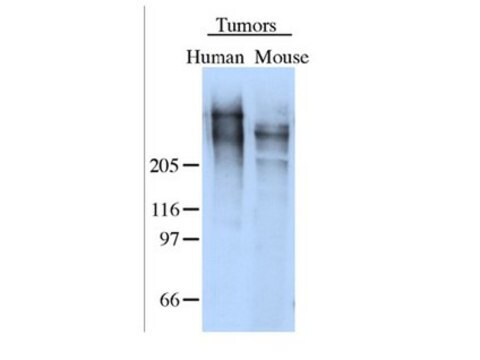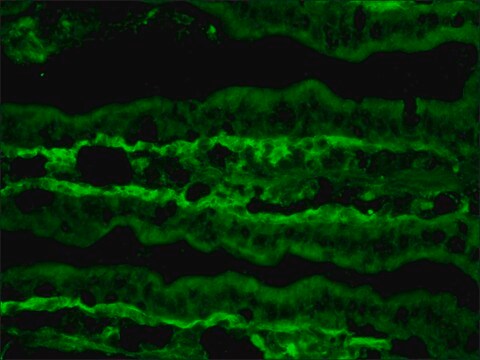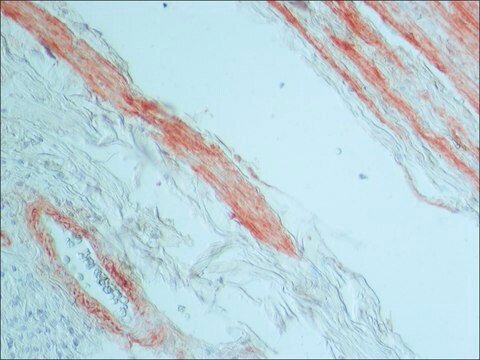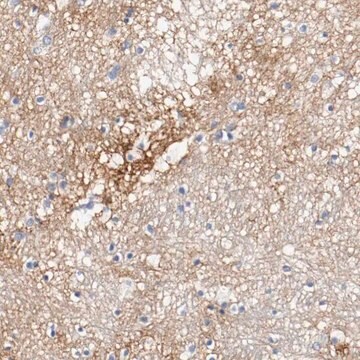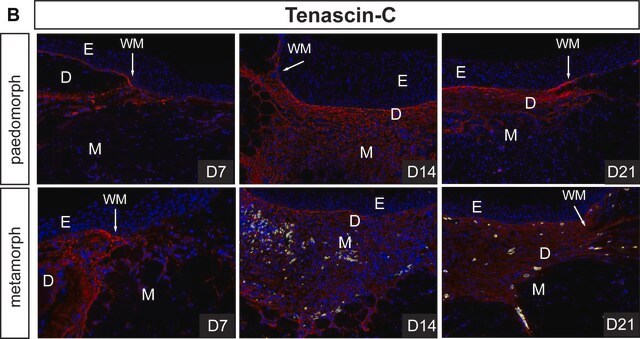SAB4200782
Anti-Tenascin antibody, Mouse monoclonal
clone BC-24, purified from hybridoma cell culture
동의어(들):
Anti-Cytotactin, Anti-GMEM, Anti-GP 150-225, Anti-Glioma-associated-extracellular matrix antigen, Anti-Hexabrachion, Anti-JI, Anti-Myotendinous antigen, Anti-Neuronectin, Anti-TN, Anti-Tenascin-C (TN-C)
About This Item
추천 제품
생물학적 소스
mouse
Quality Level
항체 형태
purified from hybridoma cell culture
항체 생산 유형
primary antibodies
클론
BC-24, monoclonal
형태
buffered aqueous solution
종 반응성
human
농도
~1.0 mg/mL
기술
ELISA: suitable
flow cytometry: suitable
immunoblotting: suitable
immunohistochemistry: 5-10 μg/mL using pronase-retrieved formalin-fixed, paraffin-embedded human tonsil sections
동형
IgG1
UniProt 수납 번호
배송 상태
dry ice
저장 온도
−20°C
타겟 번역 후 변형
unmodified
유전자 정보
human ... TNC(3371)
관련 카테고리
일반 설명
면역원
애플리케이션
- in immunoblotting
- in Immunohistochemistry
- in flow cytometry
- in enzyme linked immunosorbent assay(ELISA)
- for blocking tenascin-C proliferating activity
생화학적/생리학적 작용
물리적 형태
기타 정보
적합한 제품을 찾을 수 없으신가요?
당사의 제품 선택기 도구.을(를) 시도해 보세요.
Storage Class Code
10 - Combustible liquids
WGK
nwg
Flash Point (°F)
Not applicable
Flash Point (°C)
Not applicable
시험 성적서(COA)
제품의 로트/배치 번호를 입력하여 시험 성적서(COA)을 검색하십시오. 로트 및 배치 번호는 제품 라벨에 있는 ‘로트’ 또는 ‘배치’라는 용어 뒤에서 찾을 수 있습니다.
자사의 과학자팀은 생명 과학, 재료 과학, 화학 합성, 크로마토그래피, 분석 및 기타 많은 영역을 포함한 모든 과학 분야에 경험이 있습니다..
고객지원팀으로 연락바랍니다.